Makita HR2641, HR2630, HR2631FT, HR2630T, HR2631F User Manual
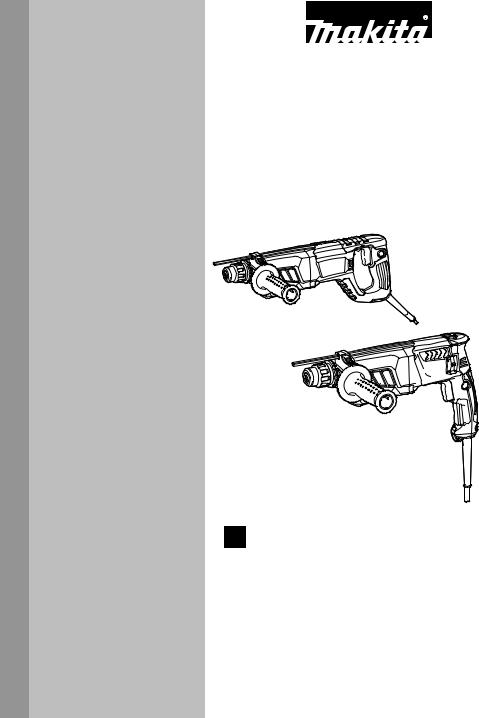
INSTRUCTION MANUAL
MANUEL D'INSTRUCTION
MANUAL DE INSTRUCCIONES
Combination Hammer
Marteau Combi
Martillo Rotativo Combinado
HR2631F
HR2631FT
HR2641
HR2630
HR2630T
015335
DOUBLE INSULATION
DOUBLE ISOLATION
DOBLE AISLAMIENTO
IMPORTANT: Read Before Using.
IMPORTANT: Lire avant usage.
IMPORTANTE: Leer antes de usar.

ENGLISH (Original instructions)
SPECIFICATIONS
|
Model |
HR2631F |
HR2631FT |
|
HR2641 |
|
HR2630 |
HR2630T |
|
|
|
Concrete |
|
|
|
26 mm (1") |
|
|
|
|
|
Core bit |
|
|
68 mm (2-11/16") |
|
|
||
Capacities |
|
Diamond core bit (dry type) |
|
|
80 mm (3-1/8") |
|
|
||
|
|
Steel |
|
|
|
13 mm (1/2") |
|
|
|
|
|
Wood |
|
|
32 mm (1-1/4") |
|
|
||
|
No load speed (RPM) |
0 - 1,200 /min |
|
0 - 1,100 /min |
|
0 - 1,200 /min |
|||
|
Blows per minute |
0 - 4,600 /min |
|
0 - 4,500 /min |
|
0 - 4,600 /min |
|||
|
Overall length |
361 mm |
385 mm |
|
422 mm |
|
361 mm |
385 mm |
|
|
(14-1/4") |
(15-1/8") |
|
(16-5/8") |
|
(14-1/4") |
(15-1/8") |
||
|
|
|
|
|
|||||
|
Net weight |
2.9 kg |
3.1 kg (6.8 lbs) |
|
2.8 kg |
3.0 kg |
|||
|
(6.4 lbs) |
|
(6.2 lbs) |
(6.6 lbs) |
|||||
|
|
|
|
|
|
|
|||
|
|
|
|
|
|
|
|
|
|
•Due to our continuing program of research and development, the specifications herein are subject to change without notice.
•Specifications may differ from country to country.
•Weight according to EPTA-Procedure 01/2003
GEA008-2
General Power Tool Safety Warnings
 WARNING Read all safety warnings and all instructions. Failure to follow the warnings and instructions may result in electric shock, fire and/or serious injury.
WARNING Read all safety warnings and all instructions. Failure to follow the warnings and instructions may result in electric shock, fire and/or serious injury.
Save all warnings and instructions for future reference.
The term "power tool" in the warnings refers to your mains-operated (corded) power tool or battery-operated (cordless) power tool.
Work area safety
1.Keep work area clean and well lit. Cluttered or dark areas invite accidents.
2.Do not operate power tools in explosive atmospheres, such as in the presence of flammable liquids, gases or dust. Power tools create sparks which may ignite the dust or fumes.
3.Keep children and bystanders away while
operating a power tool. Distractions can cause you to lose control.
Electrical safety
4.Power tool plugs must match the outlet. Never modify the plug in any way. Do not use any adapter plugs with earthed (grounded) power tools. Unmodified plugs and matching outlets will reduce risk of electric shock.
5.Avoid body contact with earthed or grounded surfaces such as pipes, radiators, ranges and refrigerators. There is an increased risk of electric shock if your body is earthed or grounded.
6.Do not expose power tools to rain or wet conditions. Water entering a power tool will increase the risk of electric shock.
7.Do not abuse the cord. Never use the cord for carrying, pulling or unplugging the power tool. Keep cord away from heat, oil, sharp edges or moving parts. Damaged or entangled cords increase the risk of electric shock.
8.When operating a power tool outdoors, use an extension cord suitable for outdoor use. Use of a cord suitable for outdoor use reduces the risk of electric shock.
9.If operating a power tool in a damp location is
unavoidable, use a ground fault circuit interrupter (GFCI) protected supply. Use of an GFCI reduces the risk of electric shock.
Personal safety
10.Stay alert, watch what you are doing and use common sense when operating a power tool. Do not use a power tool while you are tired or under the influence of drugs, alcohol or medication. A moment of inattention while operating power tools may result in serious personal injury.
11.Use personal protective equipment. Always wear eye protection. Protective equipment such as dust mask, non-skid safety shoes, hard hat, or hearing protection used for appropriate conditions will reduce personal injuries.
12.Prevent unintentional starting. Ensure the switch is in the off-position before connecting to power source and/or battery pack, picking up or carrying the tool. Carrying power tools with your finger on the switch or energising power tools that have the switch on invites accidents.
2
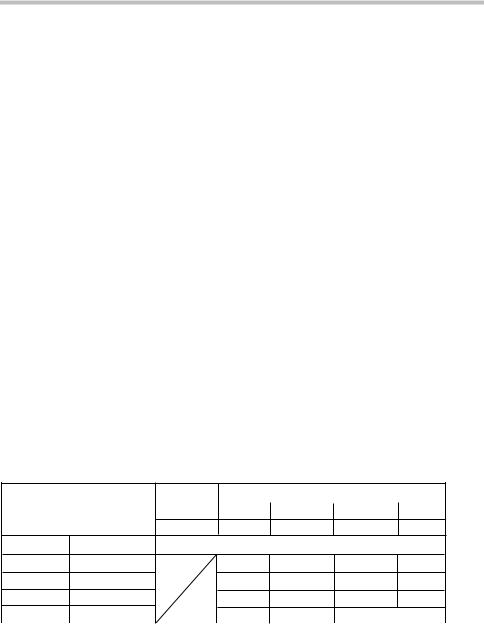
13.Remove any adjusting key or wrench before turning the power tool on. A wrench or a key left attached to a rotating part of the power tool may result in personal injury.
14.Do not overreach. Keep proper footing and balance at all times. This enables better control of the power tool in unexpected situations.
21.Maintain power tools. Check for misalignment or binding of moving parts, breakage of parts and any other condition that may affect the power tool’s operation. If damaged, have the power tool repaired before use. Many accidents are caused by poorly maintained power tools.
15.Dress properly. Do not wear loose clothing or 22. Keep cutting tools sharp and clean. Properly
jewellery. Keep your hair, clothing, and gloves away from moving parts. Loose clothes, jewellery or long hair can be caught in moving parts.
16.If devices are provided for the connection of dust extraction and collection facilities, ensure these are connected and properly used. Use of dust collection can reduce dust-related hazards.
Power tool use and care
17.Do not force the power tool. Use the correct power tool for your application. The correct power tool will do the job better and safer at the rate for which it was designed.
18.Do not use the power tool if the switch does not turn it on and off. Any power tool that cannot be controlled with the switch is dangerous and must be repaired.
19.Disconnect the plug from the power source and/or the battery pack from the power tool before making any adjustments, changing accessories, or storing power tools. Such preventive safety measures reduce the risk of starting the power tool accidentally.
maintained cutting tools with sharp cutting edges are less likely to bind and are easier to control.
23.Use the power tool, accessories and tool bits etc. in accordance with these instructions,
taking into account the working conditions and the work to be performed. Use of the power tool for operations different from those intended could result in a hazardous situation.
Service
24.Have your power tool serviced by a qualified repair person using only identical replacement parts. This will ensure that the safety of the power tool is maintained.
25.Follow instruction for lubricating and changing accessories.
26.Keep handles dry, clean and free from oil and grease.
USE PROPER EXTENSION CORD. Make sure your extension cord is in good condition. When using an extension cord, be sure to use one heavy enough to carry the current your product will draw. An undersized
20.Store idle power tools out of the reach of cord will cause a drop in line voltage resulting in loss of children and do not allow persons unfamiliar power and overheating. Table 1 shows the correct size
with the power tool or these instructions to operate the power tool. Power tools are dangerous in the hands of untrained users.
to use depending on cord length and nameplate ampere rating. If in doubt, use the next heavier gage. The smaller the gage number, the heavier the cord.
Table 1: Minimum gage for cord
|
Volts |
|
Total length of cord in feet |
|
|
|
|
|
|
|
|
Ampere Rating |
120V |
25 ft. |
50 ft. |
100 ft. |
150 ft. |
|
220V - 240V |
50 ft. |
100 ft. |
200 ft. |
300 ft. |
More Than |
Not More Than |
|
AWG |
|
|
0 |
6 |
18 |
16 |
16 |
14 |
6 |
10 |
18 |
16 |
14 |
12 |
10 |
12 |
16 |
16 |
14 |
12 |
12 |
16 |
14 |
12 |
Not Recommended |
|
000300 |
|
|
|
|
|
3

GEB007-7
ROTARY HAMMER SAFETY WARNINGS
1.Wear ear protectors. Exposure to noise can cause hearing loss.
2.Use auxiliary handle(s), if supplied with the tool. Loss of control can cause personal injury.
3.Hold power tool by insulated gripping surfaces, when performing an operation where the cutting accessory may contact hidden wiring or its own cord. Cutting accessory contacting a "live" wire may make exposed metal parts of the power tool "live" and could give the operator an electric shock.
4.Wear a hard hat (safety helmet), safety glasses and/or face shield. Ordinary eye or sun glasses are NOT safety glasses. It is also highly recommended that you wear a dust mask and thickly padded gloves.
5.Be sure the bit is secured in place before operation.
6.Under normal operation, the tool is designed to produce vibration. The screws can come loose easily, causing a breakdown or accident. Check tightness of screws carefully before operation.
7.In cold weather or when the tool has not been used for a long time, let the tool warm up for a while by operating it under no load. This will loosen up the lubrication. Without proper warm-up, hammering operation is difficult.
8.Always be sure you have a firm footing.
Be sure no one is below when using the tool in high locations.
9.Hold the tool firmly with both hands.
10.Keep hands away from moving parts.
11.Do not leave the tool running. Operate the tool only when hand-held.
12.Do not point the tool at any one in the area when operating. The bit could fly out and injure someone seriously.
13.Do not touch the bit or parts close to the bit immediately after operation; they may be extremely hot and could burn your skin.
14.Some material contains chemicals which may be toxic. Take caution to prevent dust inhalation and skin contact. Follow material supplier safety data.
SAVE THESE INSTRUCTIONS.
 WARNING:
WARNING:
DO NOT let comfort or familiarity with product (gained from repeated use) replace strict adherence to safety rules for the subject product. MISUSE or failure to follow the safety rules stated in this instruction manual may cause serious personal injury.
USD202-2
Symbols
The followings show the symbols used for tool.
volts
amperes
hertz
alternating current
no load speed
Class II Construction
revolutions or reciprocation per minute
number of blow
4
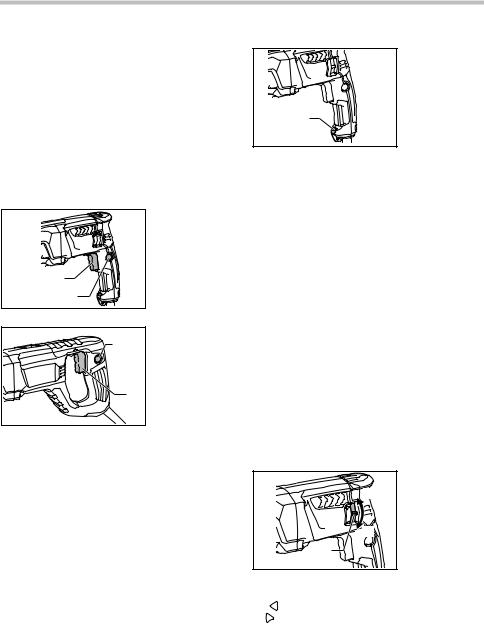
FUNCTIONAL DESCRIPTION
 CAUTION:
CAUTION:
•Always be sure that the tool is switched off and unplugged before adjusting or checking function on the tool.
Switch action
 CAUTION:
CAUTION:
•Before plugging in the tool, always check to see that the switch trigger actuates properly and returns to the "OFF" position when released.
1 |
2 |
015336 |
2 |
1 |
015360 |
1.Switch trigger
2.Lock button
1.Switch trigger
2.Lock button
To start the tool, simply pull the switch trigger. Tool speed is increased by increasing pressure on the switch trigger. Release the switch trigger to stop. For continuous operation, pull the switch trigger, push in the lock button and then release the switch trigger. To stop the tool from the locked position, pull the switch trigger fully, then release it.
Lighting up the lamps
For Model HR2631F, HR2631FT
 CAUTION:
CAUTION:
•Do not look in the light or see the source of light directly.
1. Lamp
1
015337
To turn on the lamp, pull the trigger. Release the trigger to turn it off.
NOTE:
•Use a dry cloth to wipe the dirt off the lens of lamp. Be careful not to scratch the lens of lamp, or it may lower the illumination.
•Do not use thinner or gasoline to clean the lamp. Such solvents may damage it.
Reversing switch action
 CAUTION:
CAUTION:
•Always check the direction of rotation before operation.
•Use the reversing switch only after the tool comes to a complete stop. Changing the direction of rotation before the tool stops may damage the tool.
For Model HR2631F, HR2631FT, HR2630, HR2630T
 CAUTION:
CAUTION:
•If the switch trigger can not be depressed, check
to see that the reversing switch is fully set to position (A side) or
(A side) or (B side).
(B side).
|
1. Reversing |
B |
switch lever |
|
|
A |
|
1 |
|
015338
This tool has a reversing switch to change the direction
of |
rotation. Move the reversing switch lever to |
the |
position (A side) for clockwise rotation or |
the |
position (B side) for counterclockwise rotation. |
5

For Model HR2641
1 |
1. Reversing |
switch lever |
|
A |
B |
015361
NOTE:
•When you operate the tool in counterclockwise
rotation, the switch trigger is pulled only halfway and the tool runs at half speed. For counterclockwise rotation, you cannot push in the lock button.
This tool has a reversing switch to change the direction
of |
rotation. Move the reversing switch lever to |
|
the |
position (A side) for clockwise rotation |
or |
the |
position (B side) for counterclockwise rotation. |
|
Changing the quick change chuck for SDSplus
For Model HR2631FT, HR2630T
The quick change chuck for SDS-plus can be easily exchanged for the quick change drill chuck.
Removing the quick change chuck for SDS-plus
 CAUTION:
CAUTION:
•Before removing the quick change chuck for SDSplus, always remove the bit.
|
3 |
1. Quick change |
|
1 |
chuck for SDS- |
||
|
|||
|
|
plus |
|
|
|
2. Change cover |
|
|
|
line |
|
|
|
3. Change cover |
|
|
2 |
|
|
015339 |
|
|
Grasp the change cover of the quick change chuck for SDS-plus and turn in the direction of the arrow until the change cover line moves from the  symbol to the
symbol to the  symbol. Pull forcefully in the direction of the arrow.
symbol. Pull forcefully in the direction of the arrow.
Attaching the quick change drill chuck
|
|
1. |
Spindle |
|
1 |
2. Quick change |
|
|
|
drill chuck |
|
2 |
|
|
|
|
3. |
Change cover |
|
|
|
|
line |
|
|
4. |
Change cover |
3 |
|
4 |
|
015340 |
|
|
|
Check the line of the quick change drill chuck shows the
 symbol. Grasp the change cover of the quick change drill chuck and set the line to the
symbol. Grasp the change cover of the quick change drill chuck and set the line to the  symbol.
symbol.
Place the quick change drill chuck on the spindle of the tool. Grasp the change cover of the quick change drill chuck and turn the change cover line to the  symbol until a click can clearly be heard.
symbol until a click can clearly be heard.
Selecting the action mode
 CAUTION:
CAUTION:
•Do not rotate the action mode changing knob when the tool is running. The tool will be damaged.
•To avoid rapid wear on the mode change mechanism, be sure that the action mode changing knob is always positively located in one
of the three action mode positions.
Rotation with hammering
1 |
1. Rotation with |
|
hammering |
|
2. Action mode |
|
changing knob |
2 |
|
015341 |
|
For drilling in concrete, masonry, etc., rotate the action mode changing knob to the  symbol. Use a tungstencarbide tipped bit.
symbol. Use a tungstencarbide tipped bit.
Rotation only
1 |
1. Rotation only |
|
015343
For drilling in wood, metal or plastic materials, rotate the action mode changing knob to the  symbol. Use a twist drill bit or wood bit.
symbol. Use a twist drill bit or wood bit.
6

Hammering only
1. Hammering
only
1
015342
For chipping, scaling or demolition operations, rotate the action mode changing knob to the  symbol. Use a bull point, cold chisel, scaling chisel, etc.
symbol. Use a bull point, cold chisel, scaling chisel, etc.
Torque limiter
 CAUTION:
CAUTION:
•As soon as the torque limiter actuates, switch off the tool immediately. This will help prevent premature wear of the tool.
•Bits such as hole saw, which tend to pinch or
catch easily in the hole, are not appropriate for this tool. This is because they will cause the torque limiter to actuate too frequently.
The torque limiter will actuate when a certain torque level is reached. The motor will disengage from the output shaft. When this happens, the bit will stop turning.
Hook
For Model HR2641
 CAUTION:
CAUTION:
• |
Never hook the tool at high location or on |
|
potentially unstable surface. |
|
1. Hook |
|
1 |
015362 |
|
The hook is convenient for hanging the tool temporarily. To use the hook, simply lift up hook until it snaps into the open position.
When not in use, always lower hook until it snaps into the closed position.
ASSEMBLY
 CAUTION:
CAUTION:
•Always be sure that the tool is switched off and unplugged before carrying out any work on the tool.
Side grip (auxiliary handle)
2 |
1. Protrusions |
|
2. Grooves |
|
1 |
015344
 CAUTION:
CAUTION:
•Always use the side grip to ensure operating safety.
Install the side grip so that the protrusions on the grip fit in between the grooves on the tool barrel. Then tighten the grip by turning clockwise at the desired position. It may be swung 360 so as to be secured at any position.
Bit grease
Coat the bit shank head beforehand with a small amount of bit grease (about 0.5 - 1 g).
This chuck lubrication assures smooth action and longer service life.
Installing or removing the bit
1. Bit shank
2. Bit grease
1 2
003150
Clean the bit shank and apply bit grease before installing the bit.
1. Bit
1
015254
7
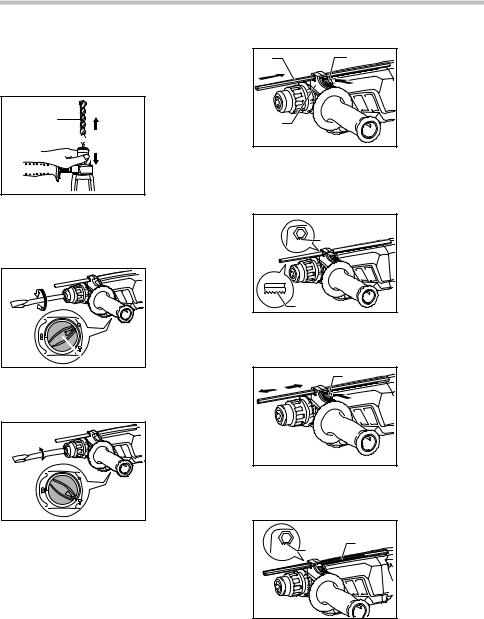
Insert the bit into the tool. Turn the bit and push it in until it engages.
After installing, always make sure that the bit is securely held in place by trying to pull it out.
|
1. |
Bit |
1 |
2. |
Chuck cover |
|
|


 2
2
015255
To remove the bit, pull the chuck cover down all the way and pull the bit out.
Bit angle
(when chipping, scaling or demolishing)
1. Action mode changing knob
 1
1
015345
The bit can be secured at the desired angle. To change the bit angle, rotate the action mode changing knob to the O symbol. Turn the bit to the desired angle.
015346
Rotate the action mode changing knob to the  symbol. Then make sure that the bit is securely held in place by turning it slightly.
symbol. Then make sure that the bit is securely held in place by turning it slightly.
Depth gauge
The depth gauge is convenient for drilling holes of uniform depth.
3 |
2 |
1. Grip base |
|
|
|
2. |
Lock button |
|
|
3. |
Depth gauge |
1 |
|
|
|
015347 |
|
|
|
Press the lock button on the grip base in the direction of arrow shown in the figure and with the lock button being pressed insert the depth gauge into the hex. hole in the grip base.
|
1. |
Toothed side of |
1 |
|
hex hole |
|
marking on the |
|
|
|
grip base |
|
2. |
Toothed side of |
|
|
the depth gauge |
2 |
|
|
015348 |
|
|
At this time, the depth gauge needs to be inserted so that its toothed side is directed to the toothed side of hex hole marking on the grip base as shown in the figure.
1 |
1. Lock button |
015349 |
|
Adjust the depth gauge to the desired depth by moving it back and forth while pressing the lock button. After the adjustment, release the lock button to lock the depth gauge.
|
|
1. Toothed side of |
|
|
2 |
hex hole |
|
1 |
marking on the |
||
|
|||
|
|
grip base |
|
|
|
2. Toothed side of |
|
|
|
the depth gauge |
|
015350 |
|
|
|
NOTE: |
|
|
•Inserting the depth gauge with its toothed side not directed to the toothed side of hex hole marking on the grip base as shown in the figure does not allow the depth gauge to be locked.
8

Dust cup (optional accessory)
1. Dust cup
1


010731
Use the dust cup to prevent dust from falling over the tool and on yourself when performing overhead drilling operations. Attach the dust cup to the bit as shown in the figure. The size of bits which the dust cup can be attached to is as follows.
|
Bit diameter |
Dust cup 5 |
6 mm (1/4") - 14.5 mm (9/16") |
|
|
Dust cup 9 |
12 mm (15/32") - 16 mm (5/8") |
006386
There is another type of dust cup (optional accessory) which helps you prevent dust from falling over the tool and on yourself when performing overhead drilling operations.
Installing or removing the dust cup (optional accessory)
2 |
1. |
symbol |
|
2. Grooves |
|
|
3. Dust cup |
|
1 |
|
|
3 |
|
|
015351 |
|
|
Before installing the dust cup, remove the bit from the tool if installed on the tool. Install the dust cup (optional accessory) on the tool so that the  symbol on the dust cup is aligned with the grooves in the tool.
symbol on the dust cup is aligned with the grooves in the tool.
1. Bit
2. Chuck cover
 2
2
1
015352
To remove the dust cup, pull the chuck cover in the direction as shown in the figure and with the chuck cover pulled take the bit out of the tool.
1 |
1. Attachment at |
|
the foot of dust |
|
cup |
015353 |
|
And then grab the attachment at the foot of dust cup and take it out.
1 |
2 |
011507 |
1 |
2 |
3 |
4 |
|
|
5 |
1.Bellows
2.Attachment
1.Inside periphery
2.Flat side
3.Attachment
4.Cap
5.Groove
015256
1 |
1. Cap |
|
2. Attachment |
||
|
2
012896
NOTE:
•When installing or removing the dust cup, the cap may come off the dust cup. At that time, proceed as follows. Remove the bellows from the attachment and fit the cap from the side shown in the figure with its flat side facing upward so that the groove in the cap fits in the inside periphery of the attachment. Finally, mount the bellows that has been removed.
9
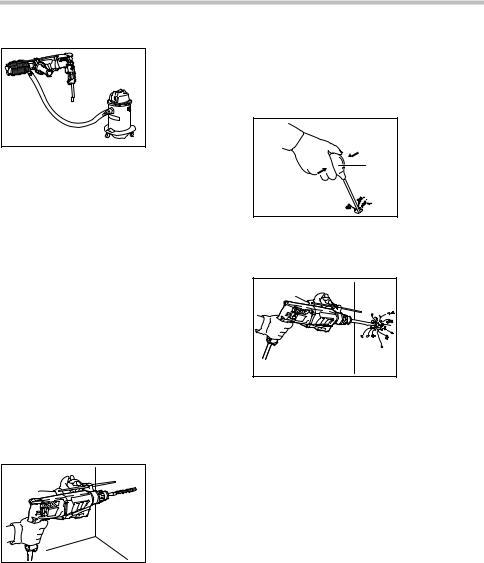
015354
NOTE:
•If you connect a vacuum cleaner to your hammer, cleaner operations can be performed. Dust cap needs to be removed from the dust cup before the connection.
OPERATION
 CAUTION:
CAUTION:
•Always use the side grip (auxiliary handle) and firmly hold the tool by both side grip and switch handle during operations.
Hammer drilling operation
 CAUTION:
CAUTION:
•There is a tremendous and sudden twisting force exerted on the tool/bit at the time of hole breakthrough, when the hole becomes clogged with chips and particles, or when striking reinforcing rods embedded in the concrete. Always use the side grip (auxiliary handle) and firmly hold the tool by both side grip and switch handle during operations. Failure to do so may result in the loss of control of the tool and potentially severe injury.
015355
Set the action mode changing knob to the  symbol. Position the bit at the desired location for the hole, then pull the switch trigger. Do not force the tool. Light pressure gives best results. Keep the tool in position and prevent it from slipping away from the hole.
symbol. Position the bit at the desired location for the hole, then pull the switch trigger. Do not force the tool. Light pressure gives best results. Keep the tool in position and prevent it from slipping away from the hole.
Do not apply more pressure when the hole becomes clogged with chips or particles. Instead, run the tool at an idle, then remove the bit partially from the hole. By repeating this several times, the hole will be cleaned out and normal drilling may be resumed.
NOTE:
Eccentricity in the bit rotation may occur while operating the tool with no load. The tool automatically centers itself during operation. This does not affect the drilling precision.
Blow-out bulb (optional accessory)
1. Blow-out bulb
1
002449
After drilling the hole, use the blow-out bulb to clean the dust out of the hole.
Chipping/Scaling/Demolition
015356
Set the action mode changing knob to the  symbol. Hold the tool firmly with both hands. Turn the tool on and apply slight pressure on the tool so that the tool will not bounce around, uncontrolled. Pressing very hard on the tool will not increase the efficiency.
symbol. Hold the tool firmly with both hands. Turn the tool on and apply slight pressure on the tool so that the tool will not bounce around, uncontrolled. Pressing very hard on the tool will not increase the efficiency.
Drilling in wood or metal
 CAUTION:
CAUTION:
•Never use "rotation with hammering" when the quick change drill chuck is installed on the tool. The quick change drill chuck may be damaged.
Also, the drill chuck will come off when reversing the tool.
•Pressing excessively on the tool will not speed up the drilling. In fact, this excessive pressure will only serve to damage the tip of your bit, decrease the tool performance and shorten the service life of the tool.
•There is a tremendous twisting force exerted on the tool/bit at the time of hole breakthrough. Hold the tool firmly and exert care when the bit begins to break through the workpiece.
•A stuck bit can be removed simply by setting the reversing switch to reverse rotation in order to back out. However, the tool may back out abruptly if you do not hold it firmly.
10
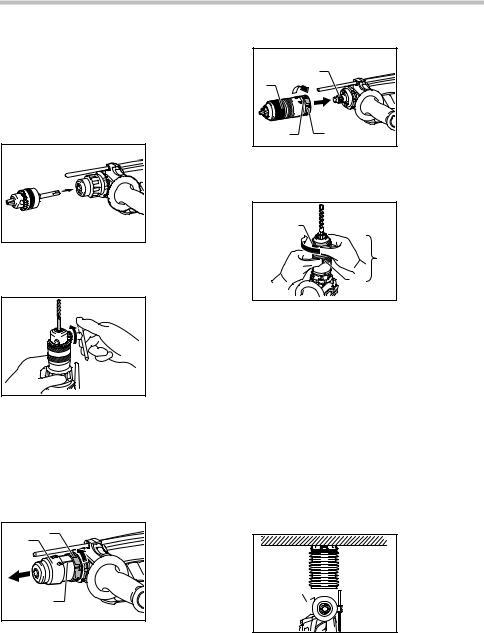
•Always secure small workpieces in a vise or similar hold-down device.
Set the action mode changing knob to the  symbol. You can drill up to 13 mm diameter in metal and up to 32 mm diameter in wood.
symbol. You can drill up to 13 mm diameter in metal and up to 32 mm diameter in wood.
For Model HR2631F, HR2641, HR2630
1. Drill chuck assembly (optional accessory)
 1
1
015357
Use the drill chuck assembly (optional accessory). When installing it, refer to "Installing or removing the bit" described on the previous page.
1. Chuck key
 1
1
015358
To install the bit, place it in the chuck as far as it will go. Tighten the chuck by hand. Place the chuck key in each of the three holes and tighten clockwise. Be sure to tighten all three chuck holes evenly.
To remove the bit, turn the chuck key counterclockwise in just one hole, then loosen the chuck by hand.
For Model HR2631FT, HR2630T |
|
||
|
3 |
1. Quick change |
|
1 |
chuck for SDS- |
||
|
|||
|
|
plus |
|
|
|
2. Change cover |
|
|
|
line |
|
|
|
3. Change cover |
|
|
2 |
|
|
015339 |
|
|
|
|
|
1. |
Spindle |
|
1 |
2. Quick change |
|
|
|
drill chuck |
|
2 |
|
|
|
|
3. |
Change cover |
|
|
|
|
line |
|
|
4. |
Change cover |
3 |
|
4 |
|
015340 |
|
|
|
Use the quick change drill chuck as standard equipment. When installing it, refer to "changing the quick change chuck for SDS-plus " described on the previous page.
2
1
3
1.Quick change drill chuck
2.Sleeve
3.Ring
015363
Hold the ring and turn the sleeve counterclockwise to open the chuck jaws. Place the bit in the chuck as far as it will go. Hold the ring firmly and turn the sleeve clockwise to tighten the chuck.
To remove the bit, hold the ring and turn the sleeve counterclockwise.
Diamond core drilling
 CAUTION:
CAUTION:
•If performing diamond core drilling operations
using "rotation with hammering" action, the diamond core bit may be damaged.
When performing diamond core drilling operations, always set the change lever to the  position to use "rotation only" action.
position to use "rotation only" action.
Operation when using the dust cup (optional accessory)
1. Dust cup


 1
1
015359
Operate the tool with the dust cup against the ceiling surface.
11

NOTE:
•The dust cup (optional accessory) is intended only for drilling in the ceramic workpiece such as concrete and mortar. Do not use the tool with the dust cup when drilling in metal or similar. Using the dust cup for drilling in the metal may damage the dust cup due to the heat produced by small metal dust or similar.
•Empty the dust cup before removing a drill bit.
•When using the dust cup, make sure that the dust cap is mounted on it securely.
MAINTENANCE
 CAUTION:
CAUTION:
•Always be sure that the tool is switched off and unplugged before attempting to perform inspection or maintenance.
•Never use gasoline, benzine, thinner, alcohol or the like. Discoloration, deformation or cracks may result.
To maintain product SAFETY and RELIABILITY, repairs, carbon brush inspection and replacement, any other maintenance or adjustment should be performed by Makita Authorized or Factory Service Centers, always using Makita replacement parts.
OPTIONAL ACCESSORIES
 CAUTION:
CAUTION:
•These accessories or attachments are recommended for use with your Makita tool specified in this manual. The use of any other accessories or attachments might present a risk of injury to persons. Only use accessory or attachment for its stated purpose.
If you need any assistance for more details regarding these accessories, ask your local Makita Service Center.
•SDS-Plus Carbide-tipped bits
•Core bit
•Bull point
•Diamond core bit
•Cold chisel
•Scaling chisel
•Grooving chisel
•Drill chuck assembly
•Drill chuck S13
•Chuck adapter
•Chuck key S13
•Bit grease
•Side grip
•Depth gauge
•Blow-out bulb
•Dust cup
•Safety goggles
•Plastic carrying case
•Keyless drill chuck
12
NOTE:
•Some items in the list may be included in the tool package as standard accessories. They may differ from country to country.
MAKITA LIMITED ONE YEAR WARRANTY
Warranty Policy
Every Makita tool is thoroughly inspected and tested before leaving the factory. It is warranted to be free of defects from workmanship and materials for the period of ONE YEAR from the date of original purchase. Should any trouble develop during this one year period, return the COMPLETE tool, freight prepaid, to one of Makita’s Factory or Authorized Service Centers. If inspection shows the trouble is caused by defective workmanship or material, Makita will repair (or at our option, replace) without charge.
This Warranty does not apply where:
repairs have been made or attempted by others:
repairs are required because of normal wear and tear:
the tool has been abused, misused or improperly maintained:
alterations have been made to the tool.
IN NO EVENT SHALL MAKITA BE LIABLE FOR ANY INDIRECT, INCIDENTAL OR CONSEQUENTIAL DAMAGES FROM THE SALE OR USE OF THE PRODUCT. THIS DISCLAIMER APPLIES BOTH DURING AND AFTER THE TERM OF THIS WARRANTY.
MAKITA DISCLAIMS LIABILITY FOR ANY IMPLIED WARRANTIES, INCLUDING IMPLIED WARRANTIES OF "MERCHANTABILITY" AND "FITNESS FOR A SPECIFIC PURPOSE," AFTER THE ONE YEAR TERM OF THIS WARRANTY.
This Warranty gives you specific legal rights, and you may also have other rights which vary from state to state. Some states do not allow the exclusion or limitation of incidental or consequential damages, so the above limitation or exclusion may not apply to you. Some states do not allow limitation on how long an implied warranty lasts, so the above limitation may not apply to you.
EN0006-1
